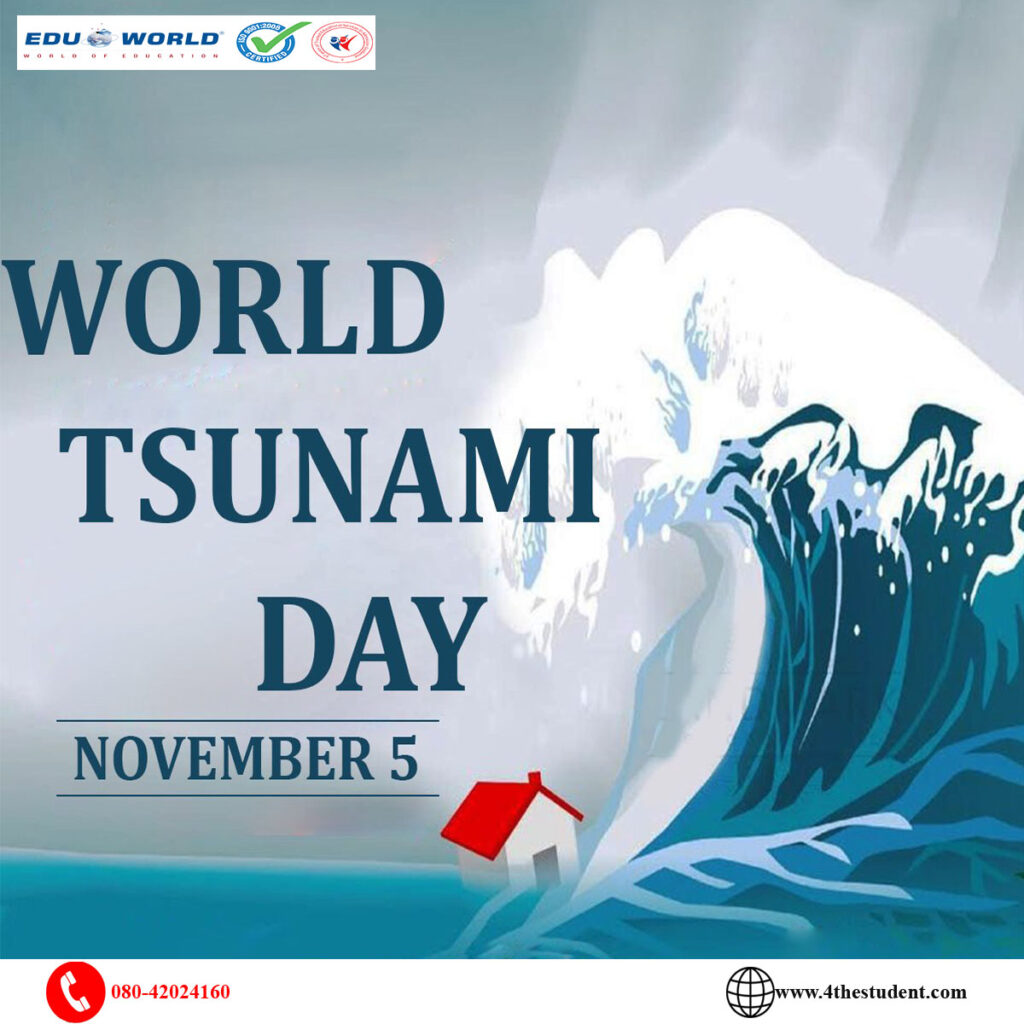Tsunamis don’t always have to be fatal. People can be protected, lives can be saved, and the hazard can be stopped before it becomes a catastrophe with effective early warning and action. Tsunami early warning systems must cover every person at risk, be multi-hazard, and be prepared so that communities can respond quickly for them to be effective. The United Nations General Assembly declared November 5 World Tsunami Awareness Day in December 2015, urging nations, international organizations, and civil society to spread tsunami awareness and innovative risk reduction strategies. Japan came up with the idea for World Tsunami Awareness Day because it has had so many devastating tsunamis that it has developed a lot of expertise over the years in areas like tsunami early warning, public action, and rebuilding better after a disaster to reduce its impact in the future. World Tsunami Awareness Day is organized by UN Disaster Risk Reduction (UNDRR) in collaboration with the rest of the UN system. Despite their rarity, tsunamis can be extremely deadly.58 of them have killed more than 260,000 people in the past 100 years, or an average of 4,600 people per disaster, more than any other natural hazard. During that time, the Indian Ocean tsunami of December 2004 caused the most fatalities. In 14 nations, it was responsible for an estimated 227,000 deaths, with Indonesia, Sri Lanka, India, and Thailand suffering the most. The international community gathered in Kobe, in the Hyogo region of Japan, just three weeks later. The first comprehensive global agreement on disaster risk reduction was ratified by governments as the 10-year Hyogo Framework for Action. They also created the Indian Ocean Tsunami Warning and Mitigation System, which sends alerts to national tsunami information centres and has numerous seismographic and sea-level monitoring stations.
In tsunami-prone areas, increasing levels of urbanization and tourism are putting more people at risk. As a result, the Sendai Framework for Disaster Risk Reduction 2015-2030, a 15-year international agreement adopted in March 2015 to replace the Hyogo Framework, prioritizes risk reduction as a key factor in achieving significant mortality reductions due to disasters.
The Japanese words “tsu,” which means “harbour,” and “nami,” which means “wave,” are combined to form the word “tsunami. “A tsunami is a series of huge waves that come from an underwater disturbance, usually from earthquakes that happen close to or below the ocean. A tsunami can also be caused by submarine landslides, coastal rock falls, volcanic eruptions, or a large asteroid hitting the ocean. They are caused by the displacement of water mass as a result of the sea floor moving vertically. Tsunami waves frequently resemble walls of water and can attack the shoreline for hours, posing a danger for 5 to 60 minutes. It’s possible that the first wave wasn’t the biggest; typically, the second, third, fourth, or even later waves were the biggest. The seafloor is exposed as soon as a wave inundates or floods an inland area and recedes to the sea. Within minutes, the following wave slams into shore, bringing with it a lot of floating debris that was destroyed by previous waves.
- Tsunamis are not caused by all earthquakes. To trigger a tsunami, an earthquake must meet four conditions:
- The quake should happen underneath the sea or influence material to slide into the sea.
- The earthquake must be powerful, measuring at least 6.5 on the Richter scale. It must also rupture the Earth’s surface and occur at a shallow depth, less than 70 kilometres below the surface.
- The sea floor must have moved vertically as a result of the earthquake.
Edu world on this day spread awareness to prevent and mitigate the dangerous effects of Tsunami. Preventing new construction in tsunami-prone areas. Constructing, locating, and designing structures to minimize damage from a tsunami. Adopting tsunami-specific building codes. Strengthening and protecting the existing infrastructure and structures that, if damaged, would have a negative impact on the response and recovery.




